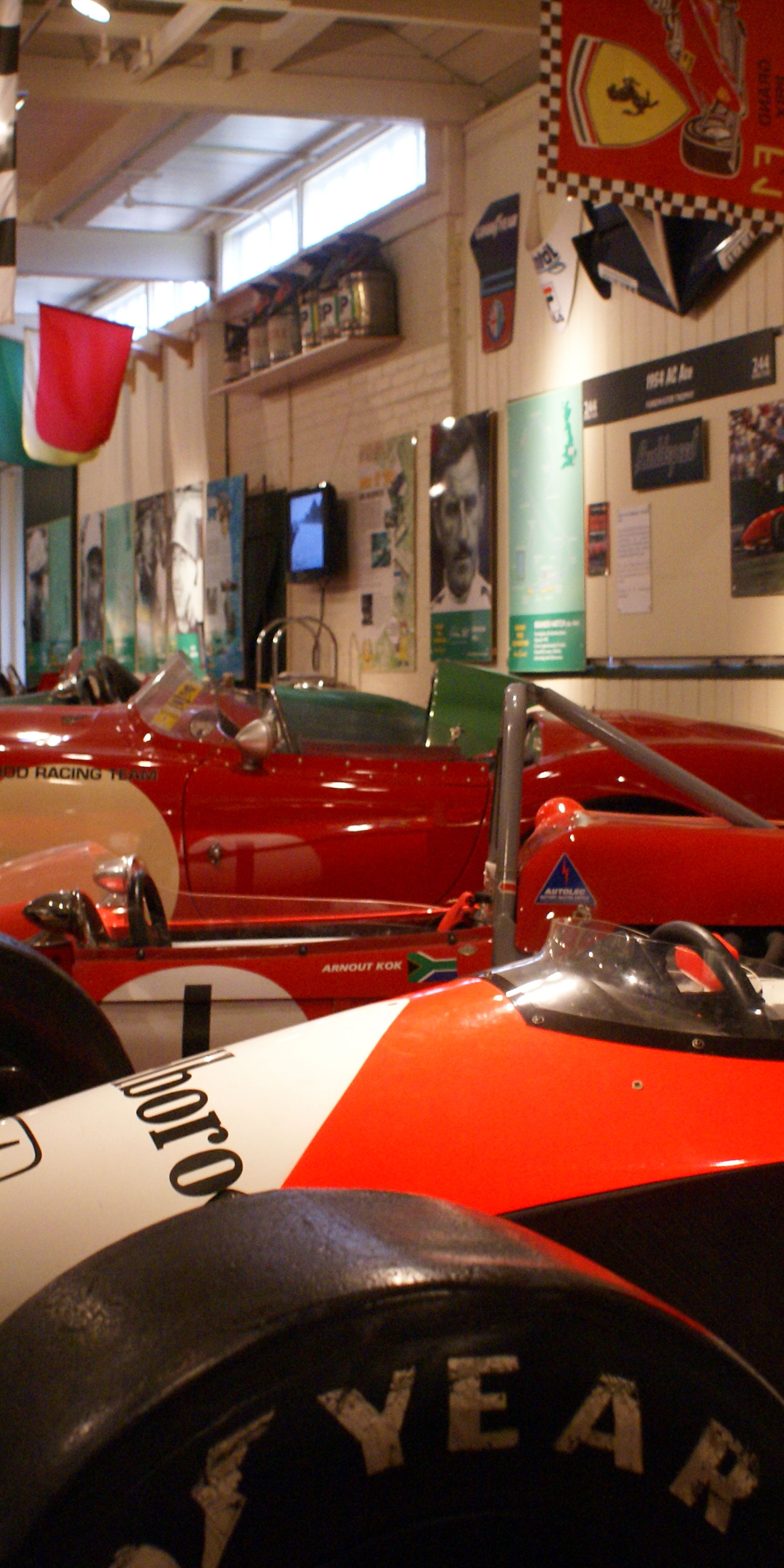Brooklands Stories: Jessie Ennis
09 May 2021
In our next Brooklands Stories, volunteer Peter Kearns is sharing the story of motorcycle racer and stunt performer Jessie Ennis.
Jessica Rosina Hole was born in 1908, her father George was manager of the Gas Light and Coke Company in Battersea. She had an older brother, George William Hole, who was six years older than her. She married William F Ennis in 1939.
When she was not quite eleven years old, her brother came home in a van, in the back of which was an old Douglas motorcycle. It was a machine that was used in the First World War, and she said “it was khaki mainly, but rusted to the devil.”. George pulled it to bits and she spent many a happy hour sitting on a high seat watching him as he gradually brought it back to good, working order. She watched him ride it, and soon he took her around the cinder track around the gas works on the back of it. Then he sat her on it and supported her as she started riding it herself. After two laps riding it solo around the cinder track, he ran alongside her as she slowed down, to hold the motorcycle up as she stopped. She was not tall enough to reach the ground, but that had not put her off.
George developed a career in Motorcycle sports, winning Golds in trials such as the London to Land’s End and the London to Edinburgh throughout the 1920’s. By 1924, at the age of sixteen, Jessie had a 2-speed Scott Super Squirrel on which she competed in reliability trials and immediately tasted success, winning the Visitors Cup in the Bognor Trial in 1925. The following year she saw an advertisement from New Imperial looking for a lady rider. She applied and was successful in securing this job, which was an unpaid job, but meant that she had factory backing and a new motorcycle almost every year.
Despite this backing and her considerable successes, she was still subject to the barriers that were then put in the way of women trying to engage in motorsports. She was not able to race at Brooklands until the Essex Motor Club organised a ladies’ motorcycle race in September 1929. It was won by Mary Ruffell on a works Grindlay Peerless, with Jessie Ennis on her New Imperial coming second.
The ACU (Auto Cycle Union) then, as now, was the body responsible for all the premier motorcycle sports events, and it continued to set its face against women’s involvement in motorcycle sports. To confront this problem, Jessie joined the Women’s Automobile and Sports Association and persuaded them to run a Land’s End Trial the week after the men’s one. She said that this clearly demonstrated that “we ladies could do anything that the men could”.
She went on to ride in many long-distance trials and hill climbs. The trials were run over several days in winter, mainly on tracks rather than made-up roads. She has a photograph of her riding along a stream on the Barnstable trial of 1929, with her mother in the sidecar.
During the summers she mainly entered short trials and hill climbs. One of her favourites was the Camberley hill climb. She said that it was so steep that you had to run at it at full speed, otherwise the bike would roll over on top of you. “it was great fun!”.
After the war, Jessie formed a motorcycle stunt team, the Dare Partners with her brother, by then Major George Hole. They performed stunts at many shows, often for charity. She would ride on her brother’s shoulders, while he worked himself up to standing on the saddle of his machine. She also performed feats such as riding through blazing hoops. Looking for new ideas, she read in a magazine of an American stunt rider riding through a pane of glass and decided to give that a go. Describing her technique for riding through glass, she said that the trick was to lean well forward so that her head (in its leather-covered helmet) hit the glass early and broke it. That way when the glass fell, it would fall behind the rest of her body. She later said: “there’s nothing in going through a fire hoop. I believe I’m still the only woman in England that has ridden through glass, and now they just use sugar glass”.
She went on to say that she always rode very sensibly on roads. Although there was not much traffic, the roads were often in poor condition. Jessie’s husband William also shared her interest in motorcycling. When living in Surrey they became involved in the Wey Valley Advanced Motorcyclists Group (WVAM). John Bennett, a founder member of WVAM, describes how she used to attend WVAM open days and bring with her various of her trophies. He remembers meeting Jessie and Bill in 1989, on a ride to the Festival of 1,000 Bikes, organised by the Vintage Motorcycle Club. Jessie was elected a Life Member of WVAM and in 1998 she was elected an Emeritus Member of the Brooklands Society.
The couple later moved to Pagham and served for fifteen years as volunteer drivers for West Sussex County Council, taking local disabled children to schools in neighbouring towns.
Jessie Ennis died in 2006, at the age of 98. In December 2001, BBC Radio 4 broadcast a programme about her. In this David Jarvis of the New Imperial Owners’ Club described a visit he had made to her in her late eighties. This ended up with her taking his 1936 model out for a ride. He described her philosophy as being one of never refusing an opportunity and always enjoying whatever comes along.
Peter Kearns, Brooklands Museum volunteer



